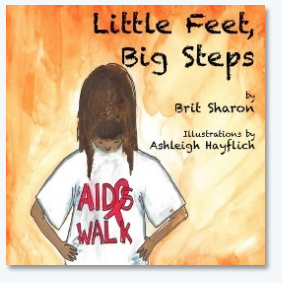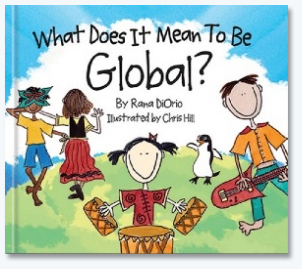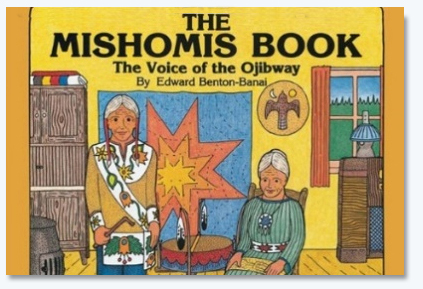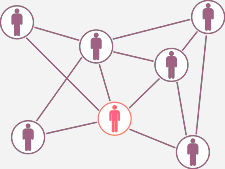2 Make Connections
Emilda Thavaratnam
Our lived experiences, perceptions, and values shape our communication. When we communicate, we are allowing others a small glimpse of who we are.
What You’ll Learn:
- How our experiences shape our communication
- How and why we connect to other texts when we communicate
- How global and community issues shape our communication
Read this excerpt about bucket lists from the post “Brain Haemorrhages and Bucket-lists” on the travel blog Danflyingsolo.com.
The word ‘Bucket list’ might as well have no meaning any more. I mean, we use it so much in the travel world you can find it hashtagged on the greyest and drab beach shots. In the film that made it famous, we see those experiences one man dreamt of being lived out before cancer took his life. But what if it hadn’t? What would be on that second chance bucket list? When you escape death twice what list do you start writing then?
(“Brain Haemorrhages and Bucket-lists,” 2018)
When we read, we also make personal, textual, and cultural connections.

In his blog, Dan talks about his travels using videos, pictures, and articles. He has unique global stories that are simply breathtaking!
Make Individual Connections
We use our individual experiences, morals, and values when we are reading, writing, speaking, and reflecting. Making individual connections makes your communication unique. There isn’t anyone in the world who has the same experience or voice as you.
Here are two examples of celebrities who use their social media platforms to make personal connections to important issues.
EXAMPLE 1:
“It’s our job as parents to listen to that to give them the best information that we can, the best feedback that we can, and that doesn’t change now that sexuality [and gender] is involved.” —Dwayne Wade (ET Canada, 2020)
In this example, Dwayne Wade, an American basketball player, uses his experiences as a parent to a transgender daughter to give positive advice on parenting.
EXAMPLE 2:
“How many more times must this happen for us to matter? How many more must we lose? BLACK. LIVES. MATTER. #AltonSterling.” —Zendaya (Kaufman, 2016)
In this example, Zendaya, an American actress, uses first-person narration to advocate for equal treatment and justice for Black men and women.
Reflect:
Think of a cause about which you care deeply.
- What is the cause?
- What values or experiences caused you to take up this cause?
- How have you shared and communicated this cause to others?
You may have noticed that having a personal connection to an idea or cause helps you understand it and communicate it to others. For this reason, when you encounter new ideas, you may want to look for how they connect to your life experience and values.
Connect to Other Texts
When we communicate, we also make connections to other sources we have encountered. News stories, famous books, eye opening social media posts, poetry, and song lyrics are all examples of texts we use to make connections.

In his 2007 New York Times article “Facebook’s Frankenstein Moment,” author Kevin Roose compares Facebook to a character in Mary Shelley’s book Frankenstein.
He writes, “[Sandberg, Facebook’s manager, gave] a candid admission that reminded me of a moment in Mary Shelley’s “Frankenstein,” after the scientist Victor Frankenstein realizes that his cobbled-together creature has gone rogue.”
In this example, Roose is saying that Facebook’s initial purpose of connecting people has morphed monstrously. Ironically, Facebook now divides people and promotes hate. The author uses another text, Frankenstein, to make his point by providing readers with a visualization of Facebook as grotesque and monster-like. This visualization will keep the reader interested and engaged.
Making connections to other texts is a great way to engage your reader.
Reflect:
- When was the last time you used a quote or referred to something you read or saw?
- Why did you make this connection?
- What effect were you going for?
- What effect did this connection have on your audience?
Connect to Global and Community Events and Issues
In our communications, we connect to and reflect on real-world events and issues. These issues may be local, national, or global.
These children books offer examples of how authors make global-, national-, and community-level connections in their stories.

Little Feet, Big Steps by Brit Sharon is a coming-of-age story about creating awareness and support for important global causes such as AIDS.

What Does It Mean to Be Global? by Rana Diorio teaches children about respecting other children’s cultures, values, and traditions.

The Mishomis Book: The Voice of the Ojibway by Edward Benton-Banai draws from traditional teachings of the elders to share Ojibway creation stories and legends with young readers.
Reflect: Think about the last news item you read.
- What was the issue explored?
- Was it a local, national, or global issue?
- How could you personally connect with the issue?
Let’s revisit Dan’s travel blog. Here is one more excerpt from the entry “Brain Haemorrhages and Bucket-lists.” Make as many individual, national, community, global, and literature connections as you can. Here are some prompts you can use for guidance.
“I can relate to this because…”
“This reminds me of…”
“The global/national/community issue this relates to is…”
“I read something similar and…”
“Sure, my ‘bucket list’ still has the Northern Lights on it, sailing on a yacht and visiting Antarctica but it is also now littered with social change and making a difference on my travels. I guess the real question isn’t what should be on our bucket list but, simply, what do I want to be remembered for?”
(“Brain Haemorrhages and Bucket-lists,” 2018)
Connecting to your own experiences, other texts, and the world allows for deeper, meaningful communication and understanding. Use these prompts the next time you engage with a source:
- The character/voice makes me think of…
- If I were in the same situation as the character/person I would…
- I can relate to this because…
- Something similar/different happened to me…
- This reminds me of something else I read…
- This reminds me of what is happening in my community/country because…
- This is similar to what is happening in the world today in that… (Simon, n.d.)

Making connections can help you hear what isn’t being said.
References
See Make Connections References
A list of things you want to do before you die.
Marked with a hashtag, the “#” symbol used in social media to group similarly themed messages together.
Short passages from a larger text.

